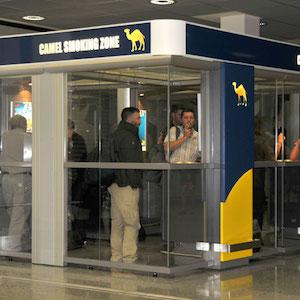My wife and I travel frequently from our home in Seattle to Europe to visit her parents. I've been across the pond 20 times, and I've visited 18 countries there.
Whenever I listen to Americans talk about Europe, I'm struck by how little they actually understand it. To the Left, Europe is a progressive paradise -- scientifically savvy, technologically advanced, and culturally liberal with cradle-to-grave welfare for all. To the Right, Europe is a socialist hellhole -- an economically stagnant, irreligious, morally bankrupt continent of has-beens.
These diametrically opposed caricatures are completely wrong. As is often the case, the truth is somewhere in the middle.
Take science policy, for instance. Europe notoriously embraces the "precautionary principle," essentially the notion that new technologies ought to be treated with suspicion and caution until they can be proven safe. In practice, this culture of Ludditism serves as the impetus behind arbitrary bans on safe chemicals and genetically modified crops. As I wrote with French scientist Marcel Kuntz in The Telegraph, this timidity holds back European progress in science. The U.S. should not follow down that path.
European and Asian Airports: A Smoker's Paradise
Paradoxically, Europe stubbornly maintains what Americans might consider a primitive attitude toward smoking. Though Europeans fear GMOs, they don't seem to fear cigarettes, even though they kill people. Smoking is annoyingly common in public spaces.
One amusing aspect of Europe's smoking culture is the prevalence of designated smoking areas in international airports. These are far less common in American and Canadian airports, which tend to ban smoking outright. In Europe and Asia, however, a smoker's gotta smoke -- so they are accommodated. At oases scattered around the airport, smokers pathetically cram into tiny, smelly rooms to get their nicotine fix.
A new report issued by the CDC examined the world's 50 busiest airports and classified them by smoking. The classification scheme was binary: The airport either banned smoking entirely or it allowed smoking at least somewhere in the airport. The map below depicts the CDC's findings. (Airports marked in red do not allow smoking, while those marked in green do. The numbers represent rank in terms of traffic, with the world's busiest airport (Atlanta) ranked #1.)

CDC data depicted using Map Customizer.
As shown, U.S. airports make life tough on smokers. Of the world's 50 busiest airports, 18 are located in North America; 14 of these (78%) ban smoking altogether.
On the other hand, Europe and Asia are a smoker's paradise. Europe has 9 of the world's 50 busiest airports; only 4 (44%) ban smoking. Asia has 22 of the world's 50 busiest airports; merely 4 (18%) disallow smoking.
Americans from both sides of the political spectrum could probably agree that the U.S. has the better policy. While secondhand smoke isn't nearly as dangerous as we were initially told, it's still obnoxious. A traveler who smokes should be able to wait to light up until he gets home.
But if he can't, he should arrange a layover in Europe or Asia.
Source: Tynan MA, Reimels E, Tucker J, King BA. "Smoke-Free Policies in the World's 50 Busiest Airports — August 2017." MMWR 66 (46): 1265-1268. Published: 24-Nov-2017. DOI: 10.15585/mmwr.mm6646a1.




